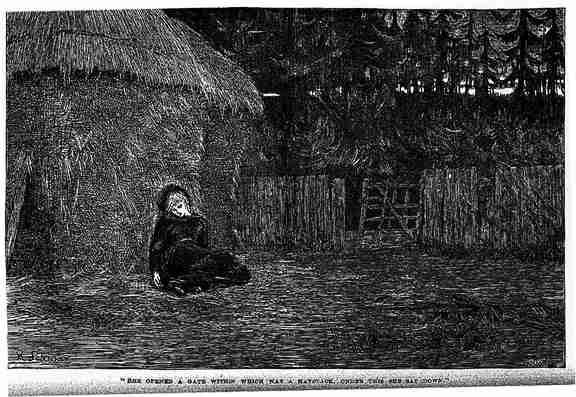Introduction
Table of Contents
The Mill on the Floss is an outstanding novel by the famous Victorian novelist George Eliot. It was first published in 1860 (three volumes).
The Mill on the Floss Summary in Short
The novel entitled The Mill on the Floss mainly describes the story of Maggie Tulliver. She is a close self-portrait. Her childhood passed in the village of St. Ogg’s which was a Midland Town. Maggie not only loves her brother Tom but is happier in his company as well.
Miss Tulliver grows up into an attractive/fine young lady. She falls in with a person named Philip Wakem but her affections replace Stephen Guest. As far as the aforementioned male character is concerned; he is known as the young man in Ogg’s and actually loves her cousin Lucy. (Once) Maggie and Stephen go out boating in the Floss river. She is engrossed in her own thoughts. That is why she is unable to understand that Stephen Guest has sailed the boat so far away that it can not return home. But, as an act of supreme self-sacrifice, Maggie remounts him.
In this way, it is clear that:
- Neither Stephen Guest will be capable of marrying Lucy
- Nor, Maggie will be able to marry Philip Wakem
No person believes Maggie is innocent. Even Tom Tulliver, Maggie’s beloved brother, denounces her for having digressed her family. Consequently, she is forced to live a lonely life and the river Floss comes to her rescue. Maggie makes a heroic effort to rescue Tom in a devastating flood. It is unfortunate that the brother and sister drowned in the flooded river. In this way, finally, Maggie Tulliver finds release from her spiritual troubles.
The Mill on the Floss Themes
- George Eliot’s The Mill on the Floss provides a description of the tension between circumstances as well as the spiritual energies of individual characters struggling against them (circumstances)
- A certain determinism is set throughout The Mill on the Floss from (a) Mr. Tulliver’s grossly imprudent failure to keep himself from “from going to law, (and) consequently losing his patrimony as well as bankrupting his family, to: (b) the series of events setting Maggie Tulliver as well as Stephen Guest down the river and past the point of no come back or return
- George Eliot presents characters like Mr. Tulliver as not capable of determining their own course rationally. Whereas different external forces, be : (a) it the drift of the river, or (b) the force of the flood, this great novelist presents as determining the courses of people for them
- The ultimate decision made by Maggie: (a) not to marry Stephen Guest, as well as (b) to suffer: (I) the privation of his love (II) the ignominy of their botched elopement demonstrates one last victory (triumph) of their free will
What is the setting of u003cemu003eThe Mill on the Flossu003c/emu003e?
George Eliot’s u003cemu003eThe Mill on the Floss u003c/emu003eis set in the countryside around the town of St. Ogg’s as well as the river named Floss.
Whose mother wishes whom to do some patchwork?
Maggie Tulliver’s mother wants her to do or perform some patchwork for aunt Glegg, but she (Maggie) shows a strong dislike for such work.
Who agrees that Tom should get a good education?
u003cstrongu003e u003c/strongu003eIt is Mr. Riley in the novel u003cemu003eThe Mill on the Floss u003c/emu003ewho agrees that Tom Tulliver should get a good education. That is why Mr. Riley recommends a clergyman, Rev. Walter Stelling.
Why does Mr. Stelling consider Tom stupid in u003cemu003eThe Mill on the Flossu003c/emu003e ?
The clergyman considers Tom stupid because his schoolwork does not improve.
Who and why represents an ugly life around Floss river?
Both, the Tullivers and the Dodsons are the representatives of ugly life around the Floss river as they are simple, semi-pagan kind. Both of them value customary as well as respectable things.




